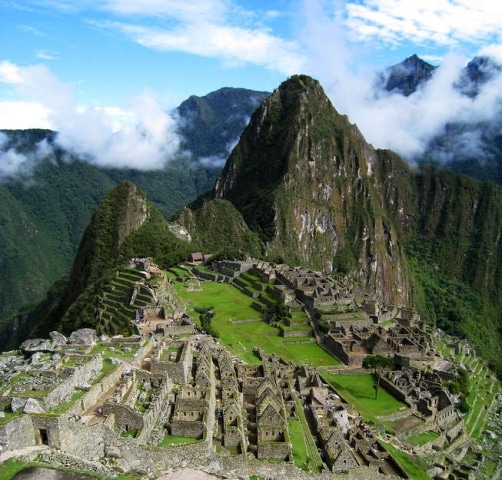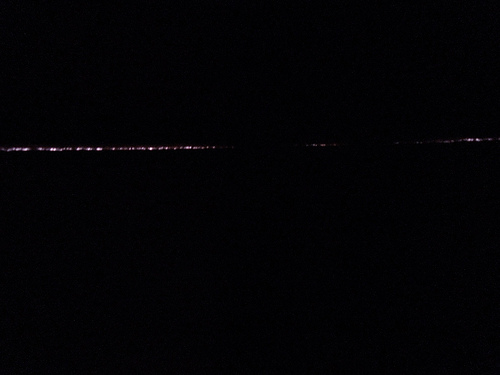Environmental Resources Management (ERM), the State Department consulting firm that claims TransCanada’s proposed Keystone XL tar sands pipeline proposal is safe and sound, previously provided a similarly rosy approval for the expansion of a Peruvian natural gas project that has since racked up a disastrous track record.
On March 1, the U.S. State Department declared KXL‘s proposed northern half environmentally safe and sound in its draft Supplemental Environmental Impact Statement (SEIS), part of TransCanada’s Presidential Permit application for the proposed tar sands pipeline.
KXL is a 1,179-mile tube set to blast 800,000 barrels of tar sands crude a day – also known as diluted bitumen or “dilbit” – from Alberta down to Port Arthur, TX. After it reaches Port Arthur, the crude will be sold to the highest bidder on the global export market. “XL” is shorthand for “expansion line,” named such because it would expand the marketability of tar sands crude to foreign buyers.
Because the Obama State Dept. has the final say on the project due to its crossing the Canada-U.S. border, clearing State’s EIS hurdle was crucial for TransCanada. Just days later, though, watchdogs revealed that State had outsourced the EIS out to oil and gas industry-tied consulting firms hand-picked by TransCanada itself.
One of those firms – Environmental Resources Management (ERM) Group – has historical ties to Big TobaccoCaspian Sea pipeline that ended up spilling 70,000 barrels of oilclient list that includes Koch Industries, ConocoPhilips and ExxonMobil – corporations all with skin in the tar sands game. ExxonMobil’s Pegasus Pipeline recently spilled 189,000 gallons of tar sands crude into a Mayflower, Arkansas neighborhood.
An examination into the historical annals shows that ERM Group also green-lighted a major pipeline and liquefied natural gas (LNG) expansion project akin to KXL in Peru. The project in a nutshell: a 253-mile-long, 34-inch pipeline carries gas obtained from Peru’s Camisea field – located partly in the Amazon rainforest with the pipeline snaking through the Andes Mountains – to Peru’s west coast. From there, it’s exported primarily to the U.S. and Mexico.
Camisea – described by Amazon Watch as the “most damaging project in the Amazon Basin“ – has created a whole host of problems. These include displacing indigenous people, clear-cutting forests that serve as a key global carbon sink to make way for the project, and major pipeline spills, to name a few.
Environmentally Sound…Except for Faulty Pipelines, Explosions
ERM performed the Environmental and Social Review Summary for Peru LNG on behalf of the International Finance Corporation (IFC), one of the tentacles of the World Bank Group. The Review lasted between Sept. 2006 and Jan. 2008.
Peru LNG, which went online in June 2010, is co-owned by an international consortium of corporations including the U.S.-based, Hunt Oil. LNG is a bit of a misnomer: the project is not only the LNG export terminal itself, but also an accompanying 253-mile pipeline carrying Camisea’s gas to Peru’s west coast and is sometimes referred to as “Camisea II.” In so doing, it traverses some of the country’s most pristine areas in the Andes and Amazon.
According to the IFC Corporation, ERM Group reviewed every aspect of the proposed project.
”[ERM Group] conducted a review of all potentially applicable environmental, social, and occupational health and safety standards and prepared a comprehensive summary of these standards,” explained the IFC. “Industry best practices have been incorporated as project standards.”
ERM‘s report for IFC also mentioned the Camisea II proposal coming “under extensive public scrutiny…for its relation to the Camisea Project,” failing to delve into any of Camisea I’s negative ecological impacts.
A pipeline that runs from Camisea I – built with a faulty welding job via corroded, recycled materials from old Brazilian and Ecuadorian pipeline projects – exploded five times in the project’s first 15 months of existence between late 2004 and March 2006.
“These pipes arrived in Peru with excessive corrosion. The corrosion was sufficient is some of these pipes that the pipe wall thickness was reduced below acceptable thresholds defined in the applicable pipeline construction codes,” engineering consulting firm E-Tech International explained in a Feb. 2006 report. “The piping was then welded by welders without proper qualifications and supervised by personnel without proper qualifications.”
Bill Powers, Executive Director of E-Tech said that utilizing unqualified welders “is absolutely prohibited anywhere in the world,” in an Aug. 2006 article appearing in Inter Press Service (IPS). That, though, didn’t stop ERM from offering its stamp of approval for Camisea II, paralleling apparently bad welding issues in the southern half of KXL, exposed by a Tar Sands Blockade activist.
One spill of the faulty pipeline running from Camisea I in Dec. 2004 caused an unknown amount of gas to spew into a jungle river, killing hundreds of fish in the process. Another Aug. 2005 spill lasting for about three hours leaked into the Toccate, Monterrico and Anchihuay Rivers and sickened hundreds.
The fifth spill in Mar. 2006 “of more than 26,000 cubic feet of fuel, triggered a fire that injured two indigenous villagers and burned dozens of acres of jungle and cropland,” explained The Texas Observer.
The Washington Times also revealed that Hunt Oil bribed Peruvian politicians to ensure Camisea II would go through as an export pipeline project during its proposal phase.
“Hunt Oil had paid Peruvian officials to change a national hydrocarbons law that would have required the…project to restrict its exports based on domestic energy needs,” The Times‘ Kelly Hearn wrote in a Nov. 2010 investigative report.
Gutting the Amazon
Procuring gas from Camisea I has meant gutting the Amazon rainforest, formerly a major global carbon sink. This parallels the Alberta tar sands and their role in destroying the Boreal Forest, another of the decaying major global carbon sinks.
“Around 54 million acres of remote and intact rainforest is now zoned for oil and gas activities in Peru,” said Matt Finer of Save America’s Forests in Feb. 2006. “This amounts to more than 25 per cent of the entire Peruvian Amazon.”
In short, one of the most richly biodiverse areas on the planet has been turned upside down.
“The remote and hitherto inaccessible Lower Urubamba is a roadless region of global ecological significance. The pipelines cut through the Vilcabamba region, an area considered by conservationists to be of almost unparalleled biological richness,” explains Amazon Watch.
Climate change – worsened by bottoming out the Camisea gas pool – has only exacerbated the quagmire in the Amazon in recent years. A major climate change impact is droughts, which has lead to fires in the Amazon basin so severe that the forest has transformed into a net carbon emitter over the past decade.
Socially Sound…Just Don’t Ask the Indigenous People
The “social” portion of the “Camisea II” Environmental and Social Review Summary ensured economic uplift.
“Today is a day for national celebration as what has brought us all together on this site at this time is the beginning of a new era in the prosperity of the Republic of Peru – an era that will benefit every citizen of this great country and help establish the Republic of Peru as a stable and responsible leader in the family of nations which constitute Latin America,” Ray Hunt, CEO of Hunt Oil, trumpeted at a press conference announcing the proposal in Jan. 2006.
The human side of the story taints Hunt’s boisterous statement, to put it mildly. Like in Alberta with the tar sands impacts on First Nations, the indigenous population has gotten the shaft in Peru. The impacted communities include uncontacted tribes whose lands are involuntarily being destroyed by the oil and gas industry.
In a May 2006 piece, The Texas Observer painted a dreary picture of life for indigenous people living in the area surrounding the Camisea project:
About 10,000 indigenous people live near the gas fields or along the pipeline route. Some of them are trying to remain isolated to preserve their cultures and livelihoods. But Camisea has brought river and air traffic and, as a result, noise and pollution that scares away the game they hunt…The resulting landslides and erosion have filled rivers with mud and vegetation, decimating indigenous supplies of fish and drinking water. The communities are also suffering an increase in infectious diseases, from respiratory illnesses to syphilis.
ERM‘s PR Game: More of the Same
PLATFORM London describes ERM Group as a key node of the “Carbon Web,” which it defines as “the network of relationships between oil and gas companies and the government departments, regulators, cultural institutions, banks and other institutions that surround them.”
Thoughout its history, ERM has proven instrumental in the fossil fuel industry’s deployment of the “Tobacco Playbook,” magically transforming one-sided scientific debates like climate change and ecological impacts of extreme pipeline proposals into faux two-sided disputes.
“It is striking that ERM played a similar role in the Camisea rainforest natural gas project in Peru and now with the Keystone XL,” said Shannon Wright, formerly the Associate Director of Amazon Watch and now head of Communitywise Bellingham. ”ERM gives a green, sustainable veneer to fundamentally flawed projects that endanger local communities, the environment and climate stability.”
Photo Credit: Icelight | Wikimedia Commons
Subscribe to our newsletter
Stay up to date with DeSmog news and alerts








